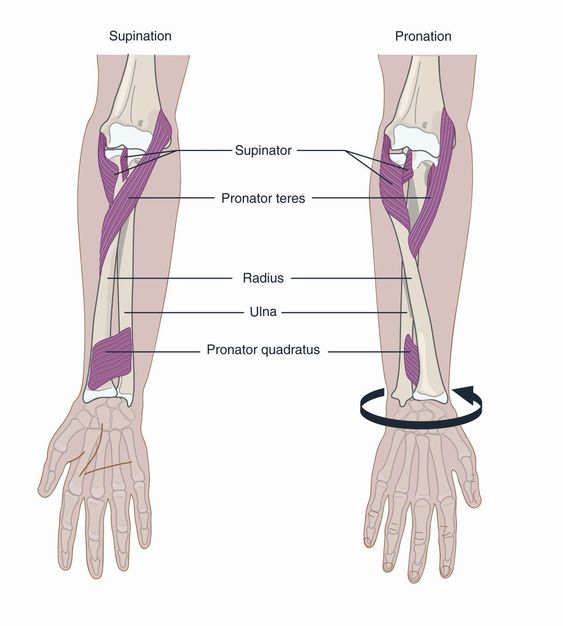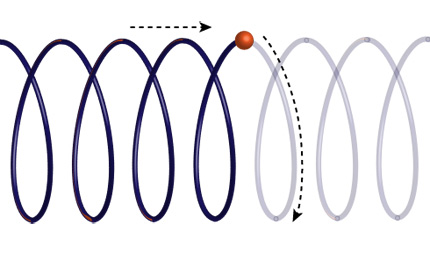In some martial arts the ‘spiral’ holds a place of special importance for the practitioners. Along with the circle, it is one of the most commonly targeted shapes in body development methods, but what is it about the spiral that makes it so useful?
If you watch the motions of some grapplers you will notice the clear circularity and ‘twist’ in their throwing technique, the body coils as it exerts the forces required. But there is more to the meaning of the 'Spiral' than simply the outward appearance of specific technical motions.
Before we look at the various uses of the spiral, we must address is what is actually meant by a ‘spiral’ in this work. When the teacher talks of spirals they are in fact more commonly referencing a type of 3 dimensional spiral sometimes known as a Helix. Most of the time when a practitioner moves or uses developmental methods a Helix will be formed via either their movement or the twisting of their tissues. Quite often in fact, a ‘conical helix’, where one end of the spiral is tighter than the other. But the term ‘Helix’ is not one that we see too often, instead the practitioners will use the word spiral to describe the many different twists, winds and turns that are demonstrated or used in the training.
Traditionally the spiral is a shape that gives form to many of the classical models of the martial arts. For instance, the Tai Chi (yin Yang) is the initiation of a spiral and if we were to extend the rotation of the two halves around each other, a clear Fermat spiral would form, indeed some of the older representations of the Tai Chi show this spiralling of Yin and Yang.
Here I will describe, in very brief terms, only some of the reasons that the spiral is so important and useful to the martial artist and why it forms one of the main modules in the MartialBody System.
Limiting Segmentation & Increasing relative strength
Connection is an important part of the martial artists arsenal. There are many ways in which we can link up the various tissues of the body, indeed the 'ConnectedBody' module is chiefly concerned with one of them! But another method of consolidating the body is to wind the tissues around each other or create tight twists of tissue around the bones. .
 Think of pointing your finger to a wall, extending your arm in front of you, then rotate your palm until it is at its maximum twist. You will notice the increased muscle engagement in the entire arm in contrast to when the arm was simply extended. This is the most fundamental benefit of spiral practice; it forces us to connect the body together by twisting the tissues in combination.
Think of pointing your finger to a wall, extending your arm in front of you, then rotate your palm until it is at its maximum twist. You will notice the increased muscle engagement in the entire arm in contrast to when the arm was simply extended. This is the most fundamental benefit of spiral practice; it forces us to connect the body together by twisting the tissues in combination.
Twisting tissues has another effect relating to the apparent power we can generate. Fundamentally if you are recruiting more muscles in a connected unified way, the tissues will work in a more cohesive fashion. Thus the apparent power you are able to produce in a given action is greater, because of the increased recruitment.
This increase in strength through spiralling was highlighted recently when scientists developed some of the most powerful artificial ‘muscles’ ever created using something as simple as fishing wire. As a series of individual strands, the strength of the wire was limited to its breaking strain, but in combination using a spiralling lattice and twisted loop formation the structures became exponentially stronger, several hundred times stronger in fact. (full article linked in footer)
“It's a simple process that goes by an equally simple moniker: "twist insertion." Researchers led by Baughman describe the technique in detail in this week's issue of Science, but the gist is as straightforward as it sounds. One end of a high-strength polymer fiber (like a 50 pound test-line, for example, available at pretty much any sporting goods store) is held fast, while the other is weighted and twisted. Twist a little and the line becomes an artificial "torsional" muscle that exerts energy by spinning.” *
Now obviously the tissues in our bodies are not analogous to fishing wire, however they do re-form into a twisted latice over time if the right demands are laid upon them. This re-structuring of the tissue takes time and dedication to the practices. However, through this training we can expect the tissues to be reformed in line with the spiralling demands we place on them. As with the synthetic muscles above the total power will be higher.
Spirals are hard to follow.
Another key component of the Spiral is how hard it is for a human to perceive through touch, a very useful attribute for the martial artist where ‘touch’ is the basis for a huge amount of the work.
 Our perception of motion (via touch) is largely attuned to linear, circular or parabolic motions. We can very easily feel a straight trajectory for instance. Regardless of speed, it is possible for the adept to perceive and counter a direct line. If we place out hand on a fist moving from point A to Point B we have no problem matching the movement.
Our perception of motion (via touch) is largely attuned to linear, circular or parabolic motions. We can very easily feel a straight trajectory for instance. Regardless of speed, it is possible for the adept to perceive and counter a direct line. If we place out hand on a fist moving from point A to Point B we have no problem matching the movement.
If, however, we begin to move the fist along the 2 planes of motion we create a curve. Again, if this is a consistent curve the movement is relatively easy to track and follow. But, if you think of the movement along either axis happening at a greater rate than the other, a changing curve is produced and the movement becomes immediately harder to follow. So even working with the first two Axis, we are producing a movement that is increasingly complex for the partner to follow. I have met some excellent martial artists who utilize this ‘changing’ curve to amazing effect. You feel like you have stopped the strike then it cuts inside your check, hitting its target.
But then comes the really difficult movement to perceive or counter, the spiral or helix, a movement on 3 axis simultaneously. A simply mental exercise to demonstrate the complexity of motion in a spiral is this. Imagine a large Spiral helix in front of you rotating slowly, pick a point on this spiral and follow the point up as the spiral rotates, you will imagine that the point travels towards and away, left to right and up. This is relatively easy to follow. But now imagine gripping a point on the spiral, your body would be dragged around and up, again relatively easy to imagine. Now think of this spiral increasing in speed and the entire spiral moving through the space in front of you. Pick a point to stop to spiral, every time you try to perceive a single point on the spiral it has moved position, around, away or towards and up.
This problem compounds when we come back to reality and out of this simple visualization exercise. The spiral force of the body is not large, it is not a perfect Helix and it is not isolated in space. Spirals in the body can be ‘conical’ – condensing as they travel, and they can be moved through the planes of direction as they spiral. Methods like Xing Yi’s Drilling fist, where the entire structure shoots forward while a spiral is expressed in the bones, tissues and body utilize this concept directly.
When you add this all of these various qualities together, merely trying to recognize a start and end point becomes hard for the partner, let along stopping the force in any real or meaningful way. It is simply never where you thought and always leaves you a step behind as you try to catch up.
To make things even more difficult we can play with the final factor – Time. Changes in speed and acceleration over time can add a vast level of complexity. Watch any high level fighter and you will notice that it is often a manipulation of the perception of timing, rhythm and tempo that can dictate the success of a given action. When we overlay this concept onto spiral force you create something extremely Complex … and hard to stop!
Avoiding direct opposition of force
Some martial arts like Taiji are famous for their focus on avoiding opposing forces directly. Instead, we see these arts foster the idea of trying to use the body in clever ways so that we do not need to be as strong as the opponent. In order to do this we work with angles, changes in direction, vectors and changing forces so that the partner never really gets to use their power in their intended direction. But one of the higher levels of this skill is for our body to handle these forces naturally due to its trained structure.
In this instance, the adepts body expresses a spiral method and this helps them to transform direct linear forces applied. Imagine that big helix in front of you again, this time horizontally. If you were to shove the spiral hard, and it was able to freely rotate, what would happen to your force and direction? It would be extinguished as you were led around and out of the spiralling corkscrew.

This is a very crude way of describing what happens when someone connected with the arm of the trained spiral body. You try to push straight into the arm but it rotates as it drills forward or back and your force cannot find the clear line into the adepts structure. It is led around in such a way that it is extinguished and the person applying the force is led off of their line. All with minimal energy expenditure and without directly opposition the partners push. When we combine this with an equal opposite spiral then the input will be returned to the partner, but that is for another post.
So this brief overview highlights some of the utility of the spiral shape in the martial body method. As you can see each concept could form a full post (if not a full book!) in itself but i hope this gives a small glimpse into how the spiral is used by the practitioner to develop themselves and deal with the forces found in martial exchange.